Dimethylprotoporphyrin IX dimethyl ester
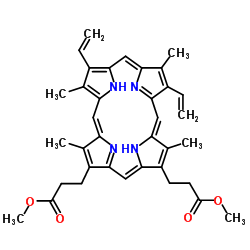
Dimethylprotoporphyrin IX dimethyl ester structure
|
Common Name | Dimethylprotoporphyrin IX dimethyl ester | ||
|---|---|---|---|---|
| CAS Number | 5522-66-7 | Molecular Weight | 590.711 | |
| Density | 1.2±0.1 g/cm3 | Boiling Point | 1017.0±65.0 °C at 760 mmHg | |
| Molecular Formula | C36H38N4O4 | Melting Point | 225-228ºC | |
| MSDS | Chinese USA | Flash Point | 568.8±34.3 °C | |
| Name | Protoporphyrin IX dimethyl ester |
|---|---|
| Synonym | More Synonyms |
| Density | 1.2±0.1 g/cm3 |
|---|---|
| Boiling Point | 1017.0±65.0 °C at 760 mmHg |
| Melting Point | 225-228ºC |
| Molecular Formula | C36H38N4O4 |
| Molecular Weight | 590.711 |
| Flash Point | 568.8±34.3 °C |
| Exact Mass | 590.289307 |
| PSA | 108.90000 |
| LogP | 8.21 |
| Vapour Pressure | 0.0±0.3 mmHg at 25°C |
| Index of Refraction | 1.630 |
| Storage condition | 2~8°C |
|
Section 1: Product Identification Chemical Name:Protoporphyrin IX dimethyl ester CAS Registry Number:5522-66-7 Formula:C36H38N4O4 EINECS Number:226-870-3 Chemical Family:porphine (porphyrin) ligand Synonym:None
Section 2: Composition and Information on Ingredients IngredientCAS NumberPercentACGIH (TWA)OSHA (PEL) Title Compound5522-66-7100%no datano data Section 3: Hazards Identification Emergency Overview:No particular hazard associated with this material. Primary Routes of Exposure:Ingestion, inhalation Eye Contact:May cause slight to mild irritation of the eyes. Skin Contact:May cause slight to mild irritation of the skin. Inhalation:May be irritating to the nose, mucous membranes and respiratory tract. Ingestion:No specific information is available on the physiological effects of ingestion. Acute Health Affects:May be irritating to skin, eyes and respiratory tract. Chronic Health Affects:No information available on long-term chronic effects. NTP:No IARC:No OSHA:No SECTION 4: First Aid Measures Immediately flush the eyes with copious amounts of water for at least 10-15 minutes. A victim may need Eye Exposure: assistance in keeping their eye lids open. Get immediate medical attention. Wash the affected area with water. Remove contaminated clothes if necessary. Seek medical assistance if Skin Exposure: irritation persists. Remove the victim to fresh air. Closely monitor the victim for signs of respiratory problems, such as difficulty Inhalation: in breathing, coughing, wheezing, or pain. In such cases seek immediate medical assistance. Seek medical attention immediately. Keep the victim calm. Give the victim water (only if conscious). Induce Ingestion: vomiting only if directed by medical personnel. SECTION 5: Fire Fighting Measures Flash Point:no data Autoignition Temperature:none Explosion Limits:none Extinguishing Medium:carbon dioxide, dry powder or foam If this material is involved in a fire, fire fighters should be equipped with a NIOSH approved, positive pressure Special Fire Fighting Procedures: self contained breathing apparatus and full protective clothing. Hazardous Combustion andIf involved in a fire this material may emit toxic organic fumes. Decomposion Products: Unusual Fire or Explosion Hazards: No unusual fire or explosion hazards. SECTION 6: Accidental Release Measures Spill and Leak Procedures:Small spills can be mixed with vermiculite or sodium carbonate and swept up. SECTION 7: Handling and Storage Handling and Storage:Store in a tightly sealed container. Keep away from heat and direct sunlight. SECTION 8: Exposure Controls and Personal Protection Eye Protection:Always wear approved safety glasses when handling a chemical substance in the laboratory. Skin Protection:Wear protective clothing and gloves. Ventilation:Material may form a fine dust. If possible, handle the material in an efficient fume hood. If ventilation is not available a respirator should be worn. The use of respirators requires a Respirator Respirator: Protection Program to be in compliance with 29 CFR 1910.134. Ventilation:Material may form a fine dust. If possible, handle the material in an efficient fume hood. Additional Protection:No additional protection required. SECTION 9: Physical and Chemical Properties Color and Form:purple xtl. Molecular Weight:590.73 Melting Point:no data Boiling Point:no data Vapor Pressure:not applicable Specific Gravity:no data Odor:none Solubility in Water:insoluble SECTION 10: Stability and Reactivity Stability:air and moisture stable solid Hazardous Polymerization:no hazardous polymerization Conditions to Avoid:none Incompatibility:oxidizing agents Decomposition Products:carbon dioxide, carbon monoxide, nitrogen oxides, and organic fumes SECTION 11: Toxicological Information RTECS Data:No information available in the RTECS files. Carcinogenic Effects:No data available Mutagenic Effects:No data available Tetratogenic Effects:No data available SECTION 12: Ecological Information Ecological Information:No information available SECTION 13: Disposal Considerations Disposal:Dispose of according to local, state and federal regulations. SECTION 14: Transportation Shipping Name (CFR):Non-hazardous Hazard Class (CFR):NA Additional Hazard Class (CFR):NA Packaging Group (CFR):NA UN ID Number (CFR):NA Shipping Name (IATA):Non-hazardous Hazard Class (IATA):NA Additional Hazard Class (IATA):NA Packaging Group (IATA):NA UN ID Number (IATA):NA SECTION 15: Regulatory Information TSCA:Listed in the TSCA inventory. SARA (Title 313):Not reportable under SARA Title 313 Second Ingredient:none SECTION 16 - ADDITIONAL INFORMATION N/A |
| Personal Protective Equipment | Eyeshields;Gloves;type N95 (US);type P1 (EN143) respirator filter |
|---|---|
| Hazard Codes | Xi |
| RIDADR | NONH for all modes of transport |
| WGK Germany | 3.0 |
| Precursor 10 | |
|---|---|
| DownStream 8 | |
|
Observation of heme transfer from cytochrome b5 to DNA aptamer.
Spectrochim. Acta. A. Mol. Biomol. Spectrosc. 96 , 365-9, (2012) Heme transfer is commonly observed from one heme protein to the other such as from cytochrome b(5) (cyt b(5)) to apo-myoglobin. In this study, instead of to another heme protein, we observed the heme ... |
|
|
Direct electrochemistry and spectroelectrochemistry of osmium substituted horseradish peroxidase.
Bioelectrochemistry 76(1-2) , 28-33, (2009) In this contribution the substitution of the central protoporphyrin IX iron complex of horseradish peroxidase by the respective osmium porphyrin complex is described. The direct electrochemical reduct... |
|
|
Comparison of binding ability and location of two mesoporphyrin derivatives in liposomes explored with conventional and site-selective fluorescence spectroscopy.
J. Phys. Chem. B 116(32) , 9644-52, (2012) Application of porphyrins as photosensitizers is based on their light-triggered generation of reactive oxygen species (ROS) that may cause oxidative tissue damage and ultimately kill cells. Cellular m... |
| Dimethyl 3,3'-(3,7,12,17-tetramethyl-8,13-divinyl-2,18-porphyrindiyl)dipropanoate |
| Protoporphyrin IX dimethyl ester (VAN) |
| 7,12-Diethenyl-3,8,13,17-tetramethyl-21H,23H-porphine-2,18-dipropanoic Acid Dimethyl Ester |
| Dimethyl 7,12-diethenyl-3,8,13,17-tetramethyl-21H,23H-porphine-2,18-dipropanoate |
| Protoporphyrin ix dimethyl ester |
| Protoporphyrin IX Methyl Ester |
| Protoporphyrin Dimethyl Ester |
| Dimethyl 3,3'-(3,7,12,17-tetramethyl-8,13-divinylporphyrin-2,18-diyl)dipropanoate |
| Protoporphyrin IX Di-Me Ester |
| 21H,23H-Porphine-2,18-dipropanoic acid, 7,12-diethenyl-3,8,13,17-tetramethyl-, dimethyl ester |
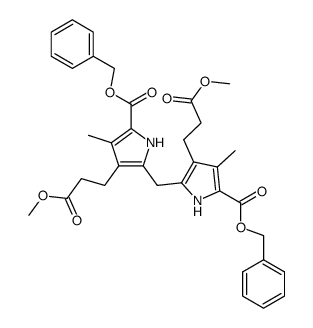 CAS#:992-36-9
CAS#:992-36-9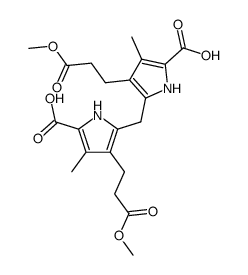 CAS#:809-27-8
CAS#:809-27-8![[5,5'-diformyl-4,4'-dimethyl-3,3'-bis[2-(methoxycarbonyl)ethyl]-2,2'-dipyrryl]methane Structure](https://image.chemsrc.com/caspic/146/4792-10-3.png) CAS#:4792-10-3
CAS#:4792-10-3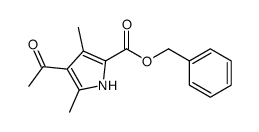 CAS#:2386-27-8
CAS#:2386-27-8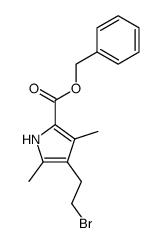 CAS#:72562-17-5
CAS#:72562-17-5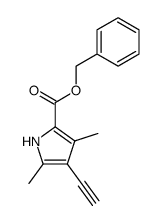 CAS#:78344-79-3
CAS#:78344-79-3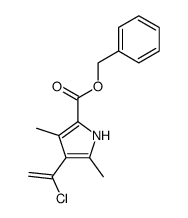 CAS#:78344-78-2
CAS#:78344-78-2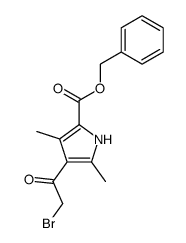 CAS#:78344-81-7
CAS#:78344-81-7 CAS#:20303-31-5
CAS#:20303-31-5![benzyl-5-(acetoxymethyl)-4-[2-(methoxycarbonyl)ethyl]-3-methylpyrrole-2--carboxylate Structure](https://image.chemsrc.com/caspic/442/859-38-1.png) CAS#:859-38-1
CAS#:859-38-1 CAS#:106-65-0
CAS#:106-65-0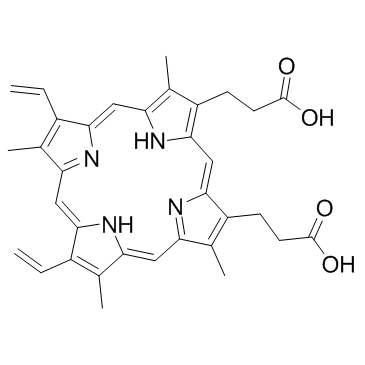 CAS#:553-12-8
CAS#:553-12-8![methyl 3-[8,13-diformyl-18-(3-methoxy-3-oxopropyl)-3,7,12,17-tetramethyl-22,23-dihydroporphyrin-2-yl]propanoate structure](https://image.chemsrc.com/caspic/411/15341-25-0.png) CAS#:15341-25-0
CAS#:15341-25-0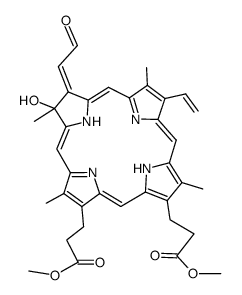 CAS#:79898-86-5
CAS#:79898-86-5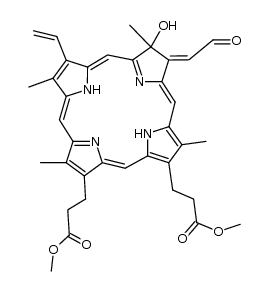 CAS#:10200-03-0
CAS#:10200-03-0 CAS#:1263-63-4
CAS#:1263-63-4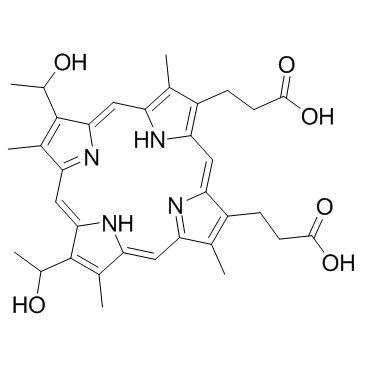 CAS#:14459-29-1
CAS#:14459-29-1 CAS#:123279-53-8
CAS#:123279-53-8
